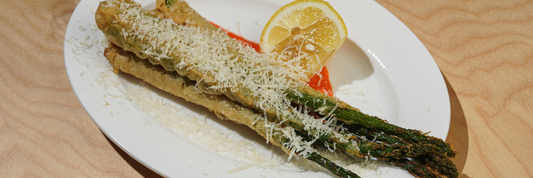Tempered glass cutting boards are gaining attention as a sleek and modern option for home kitchens. But are they just stylish, or do they bring real advantages to the table? In this blog, we’ll explore the benefits of these boards, compare them to traditional wood and plastic options, and answer a common question: are tempered glass cutting boards safe for everyday use? Let’s uncover whether this contemporary choice is the right fit for your kitchen!
What Is a Tempered Glass Cutting Board?
A tempered glass cutting board is a cutting surface made from glass that has been heat-treated to increase its strength and durability. Unlike regular glass, tempered glass is designed to resist breaking and shattering, making it safer for kitchen use. These cutting boards are often non-porous, heat-resistant, and aesthetically appealing, making them a favorite among modern home cooks and professional chefs.

Benefits of Using Tempered Glass Cutting Board
1. Hygienic and Easy to Clean
One of the standout advantages of tempered glass cutting boards is their non-porous surface. This means they do not absorb liquids, odors, or bacteria, ensuring a clean and hygienic environment for food preparation. They are also dishwasher-safe, which makes cleaning effortless and thorough.
2. Heat Resistance
Tempered glass cutting boards can withstand high temperatures without warping or melting, making them multi-functional. They can double as trivets for placing hot pots and pans directly from the stove or oven.
3. Modern and Stylish Appearance
These cutting boards often come in various designs, from minimalist clear glass to decorative patterns, allowing them to serve as both a functional tool and a decorative element in your kitchen.
4. Durable and Scratch-resistant Surface
Tempered glass is highly resistant to scratches, which means the board will retain its smooth, sleek surface over time, unlike plastic or wooden boards that may show wear and tear quickly.
5. Odor and Stain Resistance
Because glass is non-porous, it doesn’t trap odors or stains from foods like garlic, onions, or beets. This makes it ideal for maintaining a neutral and clean cooking environment.

Drawbacks of Tempered Glass Cutting Boards
1. Can Dull Knives
The hardness of tempered glass can be tough on knives, causing them to dull faster than when used on softer surfaces like wood or plastic. This may require more frequent sharpening of your knives, which can be inconvenient and reduce the lifespan of the blades.
2. Slippery Surface
The smooth surface of glass can sometimes cause food or knives to slip during use, increasing the risk of accidents. This can be mitigated by selecting boards with anti-slip feet or using a damp towel underneath the board for added stability.
3. Risk of Breakage
While tempered glass is designed to resist shattering, it is not completely unbreakable. If dropped from a significant height or hit with excessive force, it may crack or break into small, sharp pieces.
4. Noise During Use
Cutting on a glass surface can be noisier than on wood or plastic. The clinking sound of knives against glass can be a nuisance for some users.
Comparison: Tempered Glass vs. Other Cutting Boards
| Feature | Tempered Glass | Wood | Plastic | Bamboo |
|---|---|---|---|---|
| Hygiene | Excellent (non-porous) | Good, but porous | Good, can harbor scratches | Good, but porous if scratched |
| Knife Friendliness | Hard on knives | Gentle | Moderate | Moderate |
| Durability | Resistant to scratches, but breakable | Long-lasting with care | Shorter lifespan | Durable |
| Appearance | Modern and stylish | Traditional and warm | Functional, less aesthetic | Natural and rustic |
| Maintenance | Easy to clean, dishwasher-safe | Requires oiling and handwashing | Dishwasher-safe | Requires oiling and handwashing |
| Eco-friendliness | Not eco-friendly | Sustainable (if sourced ethically) | Not eco-friendly | Sustainable |
Tips for Using and Maintaining Tempered Glass Cutting Boards
-
Clean Immediately After Use:
Wash your glass cutting board with warm, soapy water or place it in the dishwasher after each use to maintain hygiene. -
Avoid Dropping:
Handle with care to avoid dropping or striking the board on hard surfaces. -
Protect Your Knives:
Use tempered glass boards for tasks that don’t require sharp knives, like cutting fruits or soft vegetables. Reserve wooden or plastic boards for heavy chopping or delicate knives. -
Stabilize the Board:
If your board doesn’t have anti-slip features, place a damp towel underneath to prevent it from sliding during use.
Conclusion
Tempered glass cutting boards offer a sleek, hygienic, and low-maintenance solution for modern kitchens. Their non-porous surface ensures a safe and clean environment for food preparation, while their durability and design add a touch of elegance to any countertop.
However, they may not be the best choice for everyone, especially those who prioritize knife longevity or need a softer, quieter cutting surface. Carefully weighing the benefits and drawbacks can help you decide if a tempered glass cutting board is the right fit for your kitchen.




